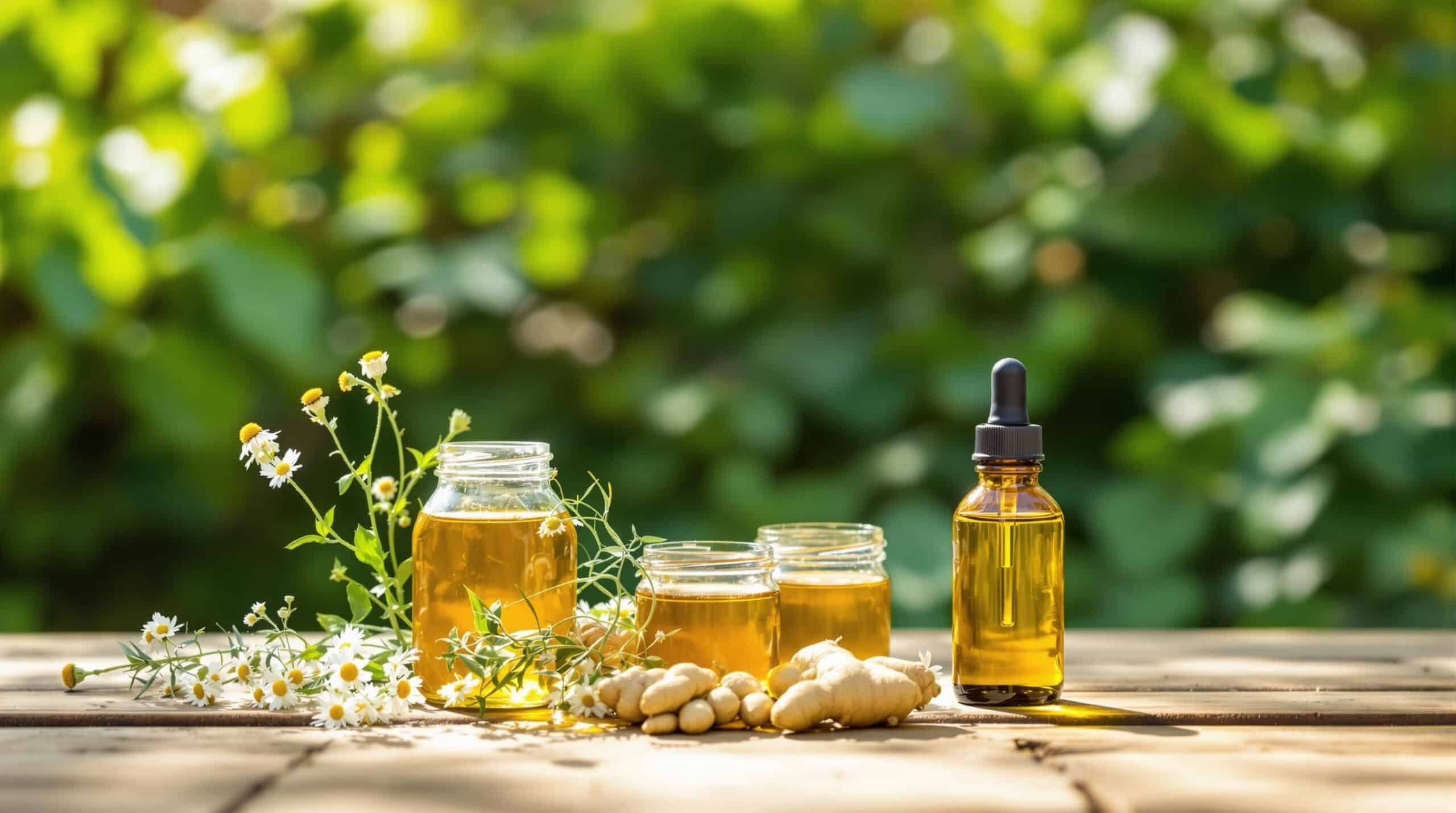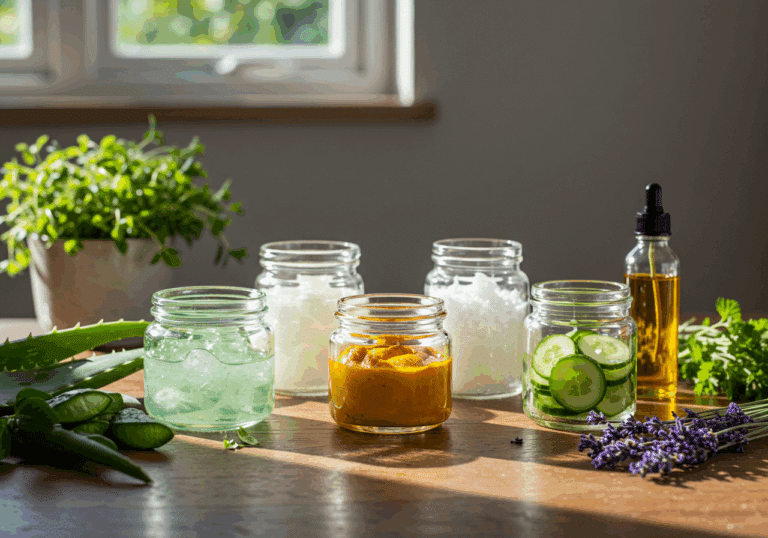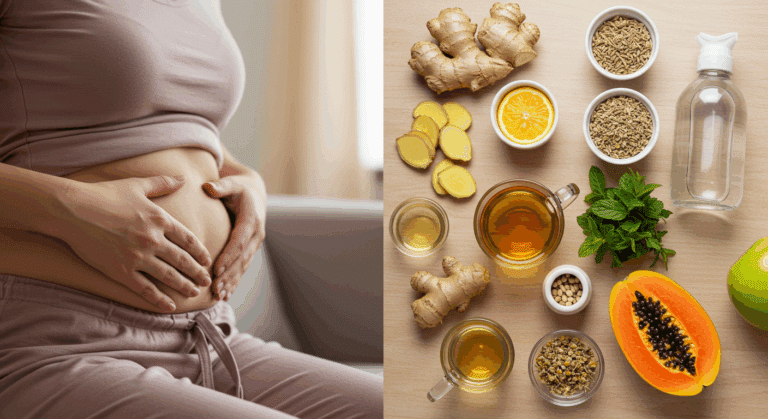10 Natural Remedies for Knee Pain Relief

If you’re dealing with knee pain, you know how it can limit your daily activities. Fortunately, there are natural remedies that can help relieve discomfort and improve mobility. From dietary adjustments to specific exercises, these approaches focus on reducing inflammation and strengthening the knee. Understanding how to effectively implement these remedies can make a significant difference in your overall well-being. Let’s explore the options that might work best for you.
Rest and Elevation Techniques
When you experience knee pain, taking the right steps to rest and elevate your knee can greatly aid in your recovery.
First, stop all activity immediately to prevent further damage and keep your knee immobile. Avoid putting weight on it, and consider using crutches to minimize strain.
Elevate your knee above heart level using pillows to reduce swelling; do this frequently, especially during the first 48-72 hours. Position your leg comfortably to avoid additional strain. RICE helps reduce swelling and is a quick, do-it-yourself approach for immediate injury care. Additionally, incorporating ginger into your diet can improve your body’s immunity, potentially aiding in the healing process. Engaging in low-impact exercises after the initial rest period can also help strengthen the muscles around your knee.
The duration of rest will depend on your injury’s severity, so monitor your pain and consult a healthcare professional for guidance.
Ice and Heat Therapy Benefits
Ice and heat therapy can be highly effective in managing knee pain, offering distinct benefits depending on your condition.
Ice therapy is great for acute injuries, as it reduces inflammation, numbs pain, and lowers swelling. It provides immediate relief and aids in recovery after workouts. Consistent application of ice therapy can significantly aid in managing knee osteoarthritis symptoms. Additionally, regular application of ice can prevent further injury during physical activities.
On the other hand, heat therapy enhances circulation and relaxes muscles, making it ideal for chronic pain and pre-exercise preparation. It improves flexibility and eases stiffness. Applying heat before activity is especially beneficial as it primes joints for action.
Both methods are accessible and generally safe when applied correctly. Remember to use a barrier between your skin and the ice or heat source to avoid damage.
Choosing the right therapy can help you find relief and improve your knee’s function.
The Role of Water Therapy
Water therapy plays an essential role in alleviating knee pain, particularly because it offers a supportive environment for gentle movement.
By engaging in low-impact exercises, you can reduce stress on your joints while promoting recovery. Immersion in water decreases weight-bearing effects, making it ideal for early rehabilitation stages. The buoyancy allows you to perform full range of motion exercises, enhancing flexibility and joint mobility. Water provides natural resistance, helping to strengthen your muscles without excessive strain. Low impact exercises reduce the risk of injury, providing safety during your recovery journey. Furthermore, incorporating an anti-inflammatory diet can further enhance the benefits of water therapy by reducing inflammation and promoting overall joint health. The warm water increases circulation, reduces inflammation, and relaxes tight muscles, contributing to pain-free movement.
Dietary Supplements for Inflammation
While water therapy effectively supports knee pain relief, dietary supplements also play a significant role in managing inflammation. Incorporating the right supplements can help alleviate discomfort and improve joint health.
Here are some options to take into account:
- Glucosamine and Chondroitin: Help maintain cartilage integrity.
- Omega-3 Fatty Acids: Reduce inflammation and support cartilage health. They are particularly effective for rheumatoid arthritis (RA) and are found in anti-inflammatory diet choices like fatty fish.
- Turmeric/Curcumin: Known for its powerful anti-inflammatory properties and contains antioxidants to neutralize free radicals.
- MSM (Methylsulfonylmethane): Supports connective tissue and may ease OA symptoms.
- Vitamin D: Essential for bone health and may aid in managing arthritis. Regular exercise combined with supplements can enhance overall joint function and reduce pain.
Always consult a doctor before starting any supplement regimen, as individual needs and potential interactions vary.
Effective Exercise and Mobility Strategies
To effectively manage knee pain, incorporating targeted exercises and mobility strategies can make a significant difference in your overall comfort and function. Focus on low-impact exercises like swimming or water aerobics, which relieve pressure on your knees. Strengthening your quadriceps through straight-leg raises and mini squats protects the joint. Lying knee bends enhance mobility, while clamshell exercises improve hip stability, aiding in pain relief. Remember to maintain good posture and wear supportive footwear to reduce strain. Gradually increase your exercise repetitions and warm up before starting any routine. If you experience significant pain, avoid certain movements and consult a healthcare professional.
Gentle stretching after workouts helps maintain flexibility and prevents stiffness in your knees. It’s important to note that around 46% of people over 50 experience knee pain, which highlights the need for effective management strategies. Engaging in regular physical activity can also aid in overall health and joint mobility, further supporting your knees’ strength and stability. Regular exercise, especially low-impact activities, is considered the best treatment for most arthritic knee pain.
Topical Applications for Pain Relief
When it comes to knee pain relief, effective herbal remedies and DIY solutions can make a real difference. You can explore options like turmeric pastes or cayenne pepper mixtures that harness natural ingredients for pain relief. These topical applications not only target inflammation but also fit easily into your daily routine. Topical NSAIDs can provide effective pain relief for joints close to the skin, like the knee, without the side effects associated with oral medications. For instance, using diclofenac gel directly on the knee can specifically address pain and swelling from osteoarthritis. Incorporating ginger extract into your regimen may also help reduce inflammation and promote overall joint health.
Effective Herbal Remedies
If you’re seeking natural ways to alleviate knee pain, effective herbal remedies can provide relief through topical applications.
These remedies harness the power of nature to target inflammation and pain directly at the source. Here are some options you might consider:
- Turmeric: Create a paste for direct application, thanks to its anti-inflammatory properties. Curcumin in turmeric may enhance its effectiveness when combined with black pepper. Additionally, turmeric can be particularly beneficial when incorporated into an overall anti-inflammatory diet.
- Ginger: Mix with water for a soothing topical treatment.
- Cinnamon: Use in a salve that rivals over-the-counter creams.
- Aloe Vera: Apply it for relief similar to NSAIDs. Additionally, a combination of treatments, including these herbal remedies, may be necessary for individual responses to be more effective.
- Frankincense: Use its resin, known for addressing arthritis symptoms.
Before trying any herbal remedy, consult with a healthcare professional to verify it’s safe for you.
DIY Pain Relief Solutions
While exploring DIY pain relief solutions, you’ll find a variety of topical applications that can effectively ease knee pain. Cayenne pepper oil warms the joint, while mustard oil combined with garlic stimulates blood flow. Coconut oil serves as a great carrier for other ingredients, enhancing their effects. You can mix essential oils, like peppermint or frankincense, with coconut or olive oil for their anti-inflammatory properties. For natural salves, try turmeric paste or ginger salves with sesame oil.
Epsom salt baths and magnesium oil can reduce inflammation, while alternating heat and cold therapies can also provide relief. Incorporating knee strengthening exercises into your routine can further support the healing process. Don’t forget to incorporate aromatherapy with oils like lavender and bergamot for a soothing experience! Warm showers can also enhance recovery by promoting relaxation and increasing blood flow to the affected areas.
Lifestyle Adjustments for Knee Health
Making simple lifestyle adjustments can greatly improve your knee health and alleviate pain.
By focusing on your daily habits, you can protect your knees and enhance your overall well-being. Here are some adjustments to reflect upon:
- Adopt a balanced diet rich in fruits, vegetables, and low-fat dairy for joint support.
- Incorporate anti-inflammatory foods like fish and turmeric to reduce inflammation.
- Engage in low-impact exercises such as swimming or cycling to minimize stress on your knees. Regular exercise can also enhance flexibility and lower inflammation levels, further promoting joint health. Additionally, incorporating specific exercises to strengthen surrounding muscles can provide greater stability and support for your knees. Moreover, regular moderate exercise can reduce knee load and enhance movement, allowing you to enjoy a more active lifestyle.
- Wear supportive footwear to help decrease pressure on your joints.
- Maintain a healthy weight to lessen the load on your knees.
Implementing these changes can lead to noticeable improvements in your knee health and comfort.
Alternative Therapies to Consider
Improving your knee health through lifestyle adjustments sets a strong foundation for exploring alternative therapies.
Acupuncture may provide pain relief by targeting specific body points, while Tai Chi combines slow movements with deep breathing to enhance balance and flexibility. Additionally, exercise and stretching can help improve knee function, complementing these therapies.
Yoga can help increase strength and ease tension, though results vary for each individual. If you’re dealing with chronic pain, consider Transcutaneous Electrical Nerve Stimulation (TENS) to disrupt pain signals.
Massage therapy can also alleviate discomfort by relaxing muscles around the knee. Additionally, essential oils, capsicum, and turmeric may offer gentle relief when used topically.
Explore these options to find what resonates with you, and don’t hesitate to consult a professional for personalized guidance.
The Importance of Proper Footwear
Choosing the right footwear is essential for maintaining knee health, as the shoes you wear can greatly impact your overall comfort and mobility.
Proper footwear provides support, reduces strain, and enhances your walking experience. When selecting shoes, keep these features in mind:
- Cushioning absorbs impact, reducing stress on your knees.
- Look for wide toe boxes to relieve pressure and enhance comfort.
- Guarantee adequate traction to prevent slips and maintain stability.
- Arch support aligns your feet, minimizing knee strain.
- Choose a moderate heel height to evenly distribute body weight.
Investing in the right shoes can be a game-changer for managing knee pain and improving your overall mobility.
Incorporating Anti-Inflammatory Foods
When it comes to managing knee pain, incorporating anti-inflammatory foods into your diet can make a significant difference.
You can focus on key ingredients like omega-3 fatty acids, dark leafy greens, and vibrant fruits.
Meal planning and food pairing can enhance these benefits, helping you create delicious meals that support your joint health.
Key Anti-Inflammatory Foods
Incorporating key anti-inflammatory foods into your diet can greatly alleviate knee pain and enhance joint health. Focusing on these foods not only helps reduce inflammation but also supports overall wellness.
Here are some fantastic options to explore:
- Leafy Greens: Spinach and kale are packed with vitamins K and antioxidants.
- Omega-3 Rich Foods: Salmon and walnuts provide essential fatty acids that fight inflammation.
- Berries: Blackberries and blueberries are rich in anthocyanins, which help reduce swelling.
- Citrus Fruits: Oranges and grapefruits boost collagen production with their vitamin C content.
- Green Tea: This beverage contains antioxidants that may protect joint health.
Meal Planning Tips
Meal planning with anti-inflammatory foods can greatly improve your overall health and ease knee pain. Start by focusing on plant-based foods, which are rich in antioxidants and fiber. Incorporate fatty fish like salmon for their omega-3s, and use herbs like turmeric and ginger for their potent benefits.
Choose whole grains such as brown rice and quinoa, while limiting processed foods and added sugars.
To simplify your meal prep, try batch cooking grains and vegetables. Keep your recipes simple—under ten ingredients works best. Stock up on whole grain wraps and pre-cut veggies for convenience.
Remember to adjust your meals based on your energy levels and pain, ensuring you stay consistent with your anti-inflammatory diet.
Food Pairing Ideas
Whether you’re preparing a meal or looking for snack ideas, pairing anti-inflammatory foods can greatly enhance their health benefits.
Combining these ingredients not only boosts flavor but also maximizes their ability to reduce inflammation and support joint health. Here are some food pairing ideas to contemplate:
- Fatty Fish and Turmeric: Enjoy salmon with a sprinkle of turmeric for potent anti-inflammatory effects.
- Berries and Spinach: Mix berries into a spinach salad for a delicious antioxidant boost.
- Ginger and Lemon: Add ginger and lemon to your tea for a revitalizing, pain-relieving drink.
- Walnuts and Whole Grains: Toss walnuts into quinoa for a nutritious, fiber-rich meal.
- Ginger and Turmeric Tea: Brew a warming tea with both spices to soothe knee pain effectively.
Frequently Asked Questions
How Long Should I Apply Ice or Heat for Knee Pain?
You should apply ice for 15-20 minutes, taking breaks to protect your skin. For heat, use it for 20-30 minutes. Always listen to your body and adjust timing based on your comfort level.
Can I Combine Different Dietary Supplements for Knee Relief?
You can combine different dietary supplements for knee relief, but be cautious. Always consult a healthcare professional first to avoid potential interactions and guarantee you’re using safe and effective dosages tailored to your needs.
What Are the Best Low-Impact Exercises for Knee Pain?
If you’re looking for the best low-impact exercises for knee pain, try swimming, cycling, or using an elliptical. These activities strengthen muscles and improve cardiovascular health without putting excessive stress on your knees.
How Often Should I Perform Stretching Exercises for My Knees?
You should perform stretching exercises for your knees 2 to 3 times a week. Gradually increase your repetitions and sets, listening to your body, and always warm up to enhance effectiveness and prevent injury.
Are There Any Specific Essential Oils Effective for Knee Pain?
Yes, you’ll find essential oils like eucalyptus, ginger, and lavender effective for knee pain. They reduce inflammation and promote relaxation, helping you manage discomfort. Just remember to dilute them before applying to your skin.
Conclusion
Incorporating these natural remedies into your routine can make a significant difference in managing knee pain. By focusing on rest, diet, and gentle exercises, you can support your joints and enhance mobility. Remember to listen to your body and adjust your activities as needed. With the right combination of approaches—like anti-inflammatory foods and proper footwear—you’ll be on your way to a more comfortable and active lifestyle. Don’t hesitate to explore these options for lasting relief!
References
- https://orthotoc.com/home-remedies-for-knee-pain/
- https://www.drganeshnavaneedhan.com/blog/10-home-remedies-for-knee-pain/
- https://www.healthline.com/health/pain-relief/knee-pain-home-remedies
- https://www.sgpainsolutions.com/general-health-tips/knee-pain-relief/
- https://www.medicalnewstoday.com/articles/311280
- https://www.lauratimmermanmd.com/2024/05/03/rice-therapy-for-knee-injuries-rest-ice-compression-and-elevation/
- https://www.webmd.com/pain-management/knee-pain/knee-pain-dos-and-donts
- https://my.clevelandclinic.org/health/treatments/rice-method
- https://www.hingehealth.com/resources/articles/ice-or-heat-for-knee-pain/
- https://resources.healthgrades.com/right-care/arthritis/heat-versus-ice-whats-really-best-for-your-knee-arthritis






